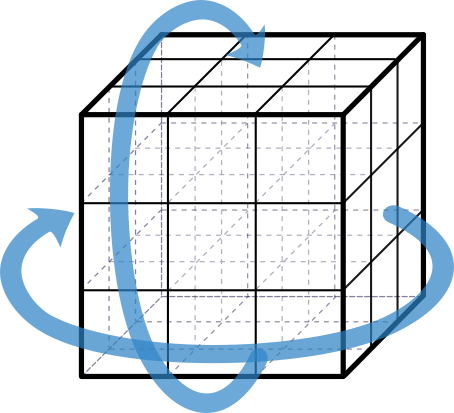Finite-Volume Techniques

Simulating quantum systems requires representing them in a limited (truncated) model space such that the calculation can be performed with a finite amount of computing resources. In the simplest case this means restricting the spatial extent of the numerical "world," along with specifying a suitable boundary condition. A convenient choice widely applied in (but not limited to) simulations using discrete space-time lattices is to enclose the physical system of interest in a periodic box, i.e, particles moving out of the volume on one side enter it again on the opposite one. This is indicated, for two out of three directions, in the figure.
Pioneering work by Martin Lüscher in the 1990s showed that such a finite volume is by no means a necessary nuisance, but in fact a valuable theoretical tool: the physics of the real-world (infinite-volume) system is encoded in how its properties change as the volume is varied.
In my research I am exploring extensions of this formalism, in particular regarding the generalization to treating systems with an arbitrary number of particles and unstable resonance states.
